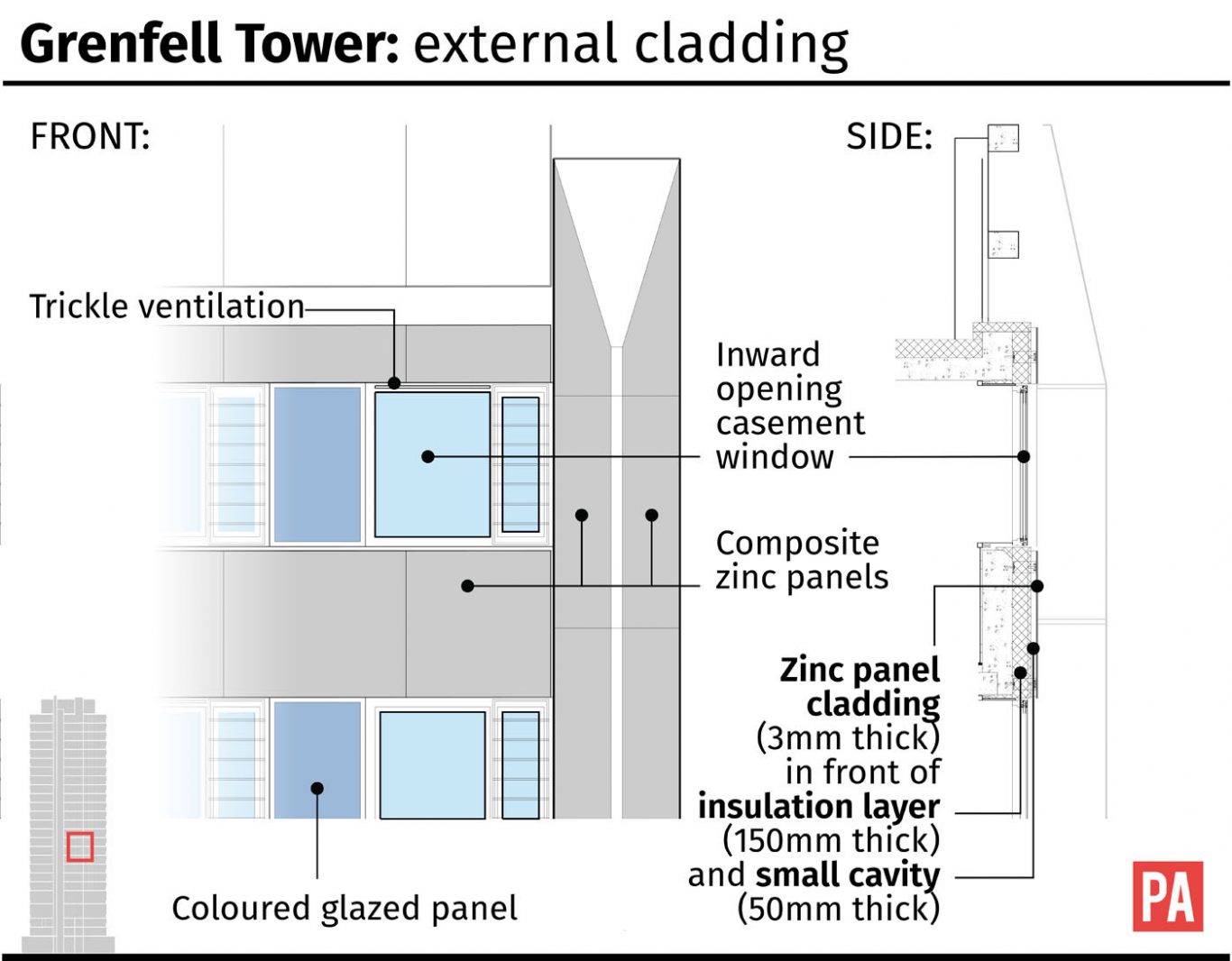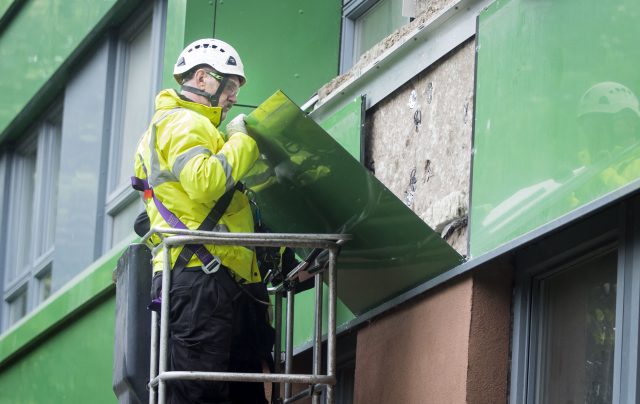The plastic core of the cladding used on Grenfell Tower could have burned as quickly as petrol, a fire safety expert has said.
The energy output from the burning building would have been equal to burning 51 tonnes of pinewood, research by the University of Leeds as reported by the BBC has suggested.
Dr Roth Phylaktou, an expert in fire investigation at the university, said the cladding combined with insulation was “optimum for vertical fire spread”.
 (PA Graphic)
(PA Graphic)
He told the BBC: “If you set that on fire near the bottom you can imagine what would happen and how fast the fire will grow.”
Before the blaze Grenfell Tower had been recently refurbished with Reynobond PE cladding, consisting of Reynolux-coated aluminium sheets over a Reynobond polyethylene core.
Dr Phylaktou said: “The polyethylene in the cladding would have burnt as quickly as petrol.”
The BBC said it had seen information released by French authorities which indicates the burning cladding would have released 14 times more heat than a European standard of “limited combustibility”.
 Cladding is removed from Hanover tower block in Sheffield (Danny Lawson/PA)
Cladding is removed from Hanover tower block in Sheffield (Danny Lawson/PA)
All buildings over 18 metres which have submitted cladding samples have failed combustibility tests rolled out after the fire, the Department for Communities and Local Government said on Tuesday.























Why are you making commenting on The Herald only available to subscribers?
It should have been a safe space for informed debate, somewhere for readers to discuss issues around the biggest stories of the day, but all too often the below the line comments on most websites have become bogged down by off-topic discussions and abuse.
heraldscotland.com is tackling this problem by allowing only subscribers to comment.
We are doing this to improve the experience for our loyal readers and we believe it will reduce the ability of trolls and troublemakers, who occasionally find their way onto our site, to abuse our journalists and readers. We also hope it will help the comments section fulfil its promise as a part of Scotland's conversation with itself.
We are lucky at The Herald. We are read by an informed, educated readership who can add their knowledge and insights to our stories.
That is invaluable.
We are making the subscriber-only change to support our valued readers, who tell us they don't want the site cluttered up with irrelevant comments, untruths and abuse.
In the past, the journalist’s job was to collect and distribute information to the audience. Technology means that readers can shape a discussion. We look forward to hearing from you on heraldscotland.com
Comments & Moderation
Readers’ comments: You are personally liable for the content of any comments you upload to this website, so please act responsibly. We do not pre-moderate or monitor readers’ comments appearing on our websites, but we do post-moderate in response to complaints we receive or otherwise when a potential problem comes to our attention. You can make a complaint by using the ‘report this post’ link . We may then apply our discretion under the user terms to amend or delete comments.
Post moderation is undertaken full-time 9am-6pm on weekdays, and on a part-time basis outwith those hours.
Read the rules hereLast Updated:
Report this comment Cancel